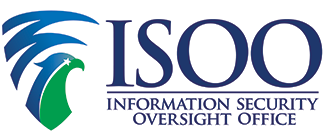
Frequently Asked Questions

New to ISOO? This page contains answers to some of the questions most frequently asked by security professionals. If you have a question that is not listed here please visit our individual programs or Contact Us.
| Select the respective title for link to learn about a specific element of E.O. 13526 and 32 CFR Part 2001 | |
|---|---|
|
E.O. 13526 and 32 CFR Part 2001 General Questions about definitions and policy
|
Original Classification Authority (OCA) and Derivative Classification Addresses common concerns regarding OCA and Derivative Classifiers |
|
Provides additional information on GSA guidance and GSA-Approved Containers
|
Express Carriers and National Security System Discusses different methods for mailing
|
|
Describes common questions about marking classified documents in various formats
|
Industrial Security approved carriers Questions about Industrial Security carriers |
|
Provides additional information on Declassification instructions and Exemptions
|
National Declassification Center (NDC) Questions regarding the NDC
|